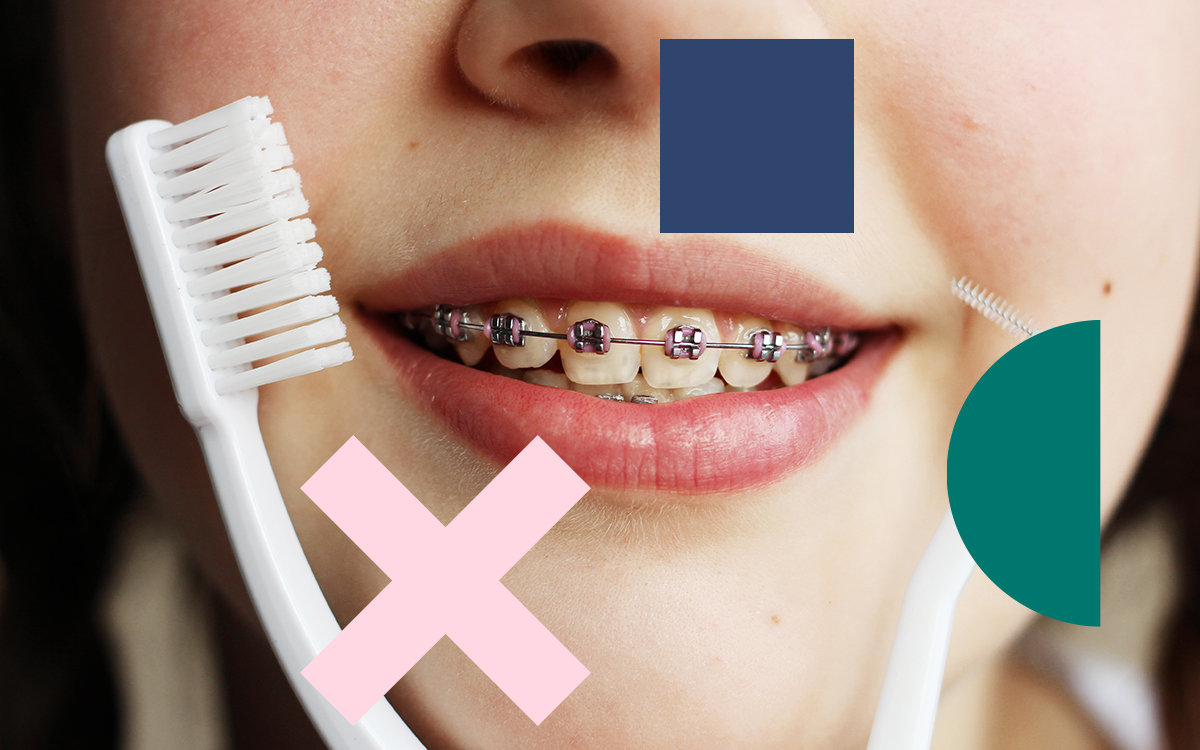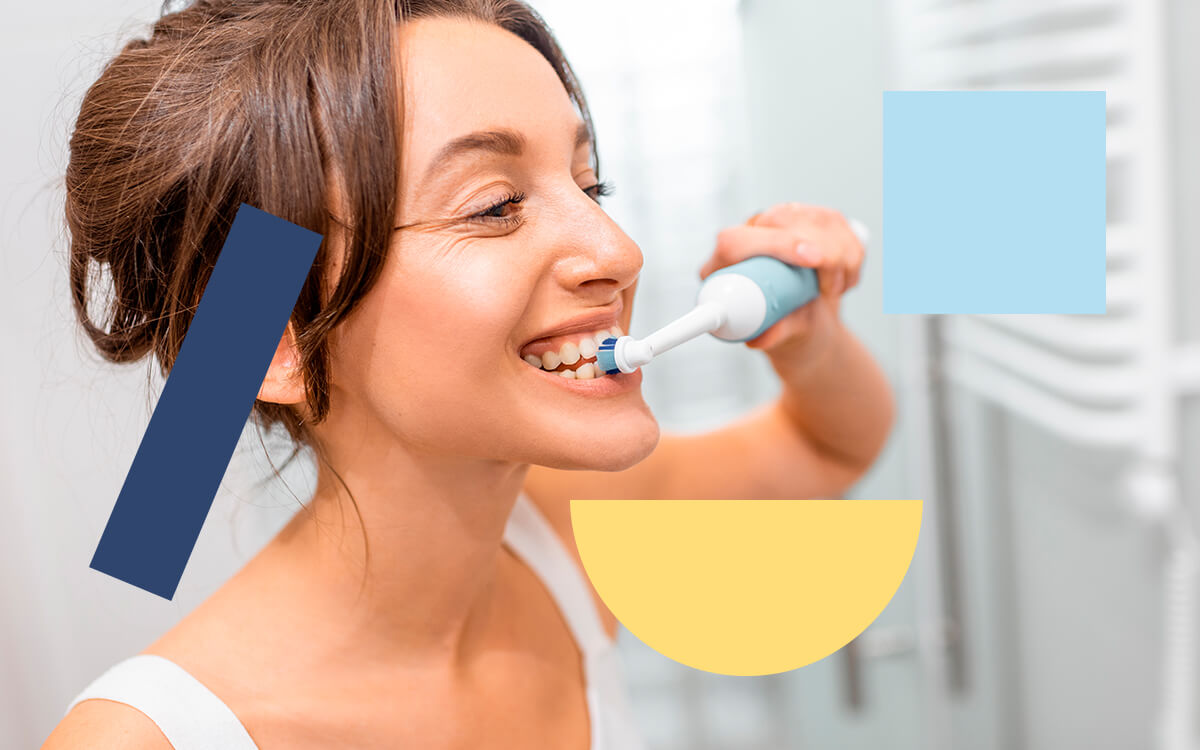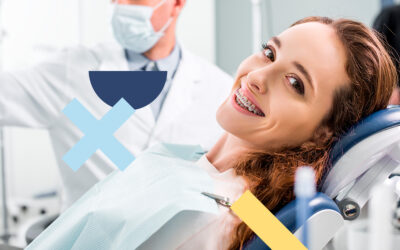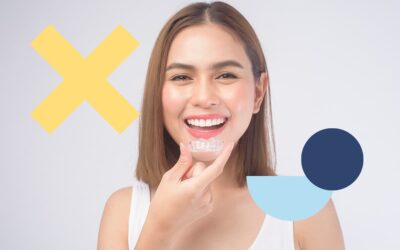Any patient undergoing orthodontic treatment requires constant review by a professional to ensure that it is developing as expected. that it is developing as expected. In addition to the orthodontist's intervention, the patient himself or herself must learn cóhow to brush their teeth with brackets adapting oral hygiene to this particular to this particular circumstance.
Brushing teeth with braces brackets is similar and at the same time different from that of a mouth without braces. Since teeth that do not belong in the mouth are inside the oral cavity, it is more common for food debris to remain attached to them, increasing the risk of plaque formation.
Do you know how to brush your teeth with teeth with brackets correctly? We tell you step by step what the process consists of.
Use of brackets
Orthodontics is the specialty within dentistry that corrects and prevents alterations in the position of the teeth and jaws. corrects and prevents alterations in the position of the teeth and jaws.. For this purpose, nowadays there are different types of techniques, among which we can differentiate between those using fixed and removable orthodontic appliances.
Each of these orthodontic techniques requires maintenance and proper brushing technique. While wearers of removable orthodontic appliances can remove them to facilitate their oral hygiene, in the case of removable braces, the use of brackets brushing requires a more specific procedure.
This time we will focus on how to brush your teeth with brackets to avoid infection and inflammation of the gums.. With a complete oral hygiene, the patient with fixed orthodontic appliances can prevent common problems such as stains on the teeth, tartar accumulation, tooth decay and halitosis, among others.
Why is it so important to clean your teeth properly?
Oral hygiene is very important for the maintenance of oral health. Through brushing and the use of different accessories, different diseases that start in the mouth and can affect general health are prevented and treated. that can affect general health.
When a patient undergoes orthodontic treatment for teeth alignment, the need to prevent oral infections is even greater. It should not be forgotten that, during the entire treatment, the mouth is more exposed to alterations and damage, the mouth is more exposed to alterations and damage that could lead to periodontal disease. that could lead to periodontal diseases.
In order to achieve better results in the placement of teeth, the patient should follow the specific Indications of your orthodontist. This will keep the mouth healthier and more protected.
Brushing teeth with brackets does not take much time or extra effort. It is only necessary to adapt the oral cleaning routine to the individual needs of each person..
How to brush your teeth with braces step by step
Before we focus on how to brush your teeth with braces, let's first look at bracesBefore we focus on how to brush your teeth with braces, it is worth mentioning the basic tools that every patient needs to have at hand. Among them are the toothbrush, which can be manual or electric, interdental brushes or dental floss, and, of course, toothpaste and Mouthwash.
In general, every orthodontic wearer should brush thoroughly after every meal, dedicating a period of time that can be as short as a few minutes after each meal.s between 5 and 10 minutes.
Preparation before brushing
Before starting brushing, it is advisable to remove any moving parts of the appliance. remove any moving parts of the appliance to facilitate the to facilitate the task. It is also advisable to rinse with water to remove as much food debris as possible from between the brackets. brackets after the meal.
Dental appliance cleaning
The next step is the brushing of the dental appliance, for which we will use the toothbrush.s and a small amount of toothpaste. Pass the brush around the wires and fixtures at a 45 degree angle to reach all the nooks and crannies. to reach all the nooks and crannies.
Teeth and gums cleaning
If necessary, rinse the brush and reapply toothpaste to continue brushing teeth and gums. Clean the teeth one at a time using light pressure light pressure in a circular motion so as not to damage to avoid damaging the enamel and gums.
Known as the Charters techniquethe recommendation is to place the bristles of the toothbrush over the gingival edge at a 45 degree angle to better access all interdental spaces and the gaps under the brackets. brackets.
You can learn more about the different toothbrushing techniques in this section of KIN's blog.
Repeat the procedure both on the external side of the teeth and on the internal side. Also on the chewing surface of the posterior teeth, where the greatest amount of food debris usually accumulates.
Flossing
Although it is advisable to use dental floss or interdental brushes with every brushing, it is essential to do it at least once a day, preferably at night before going to bed.
Pass the floss or the interdental brush through each of the spaces between the teeth, so as not to damage the gums. soft so as not to damage the gums.
Rinse with mouthwash
Finish your oral hygiene by rinsing your teeth with a daily mouthwash that contains daily use mouthwash containing fluoride. In this way you will be eliminating food debris that may have remained, as well as the bacteria responsible for the formation of biofilm on teeth and gums.
Don't forget to checking your orthodontic appliance in front of the mirrorMake sure that your teeth are completely clean. There should be no debris left on the teeth or on the teeth. brackets.

This is also the perfect time to check the condition of your gums, which should not look inflamed, as well as the correct positioning of the brackets and the rest of the pieces that are part of orthodontics.
Brushing recommendations
Regardless of the type of orthodontics the patient wears, there are a number of recommendations from dental professionals for oral health care during treatment:
- Follow a complete complete cleansing routine after every meal.
- It is possible to use either a manual toothbrush specifically for orthodontics or an electric toothbrush with a small round brush head that facilitates access to the most recessed areas of the mouth.
- Choose a brush with medium hard bristles to avoid damaging the gums to avoid damaging the gums, which are more exposed during orthodontics.
- In addition to cleaning teeth and brackets bracketsIn addition to the cleaning of teeth and brackets, it ensures proper cleaning of gums, cheeks, tongue and palate.
- Clean the toothbrush when you finish brushing your teeth, also removing toothpaste residues.
- Replace the toothbrush or electric toothbrush head every 2-3 months, or when you notice that the bristles are visibly worn.or when you notice that the bristles are visibly worn.
- Go to the dental check-ups according to the date indicated by the professional for a correct follow-up of the treatment.
At any doubt about how to brush your teeth with braces, you can bracketsAsk your dentist or orthodontist directly. Likewise, if you detect any symptoms of inflammation, bleeding, excessive accumulation of dental biofilm or detachment of any part of the orthodontic appliance, make an appointment promptly.


 What to consider when choosing the best electric toothbrush?
What to consider when choosing the best electric toothbrush? How to relieve pain with newly placed braces?
How to relieve pain with newly placed braces? How to keep your breath fresh?
How to keep your breath fresh?


